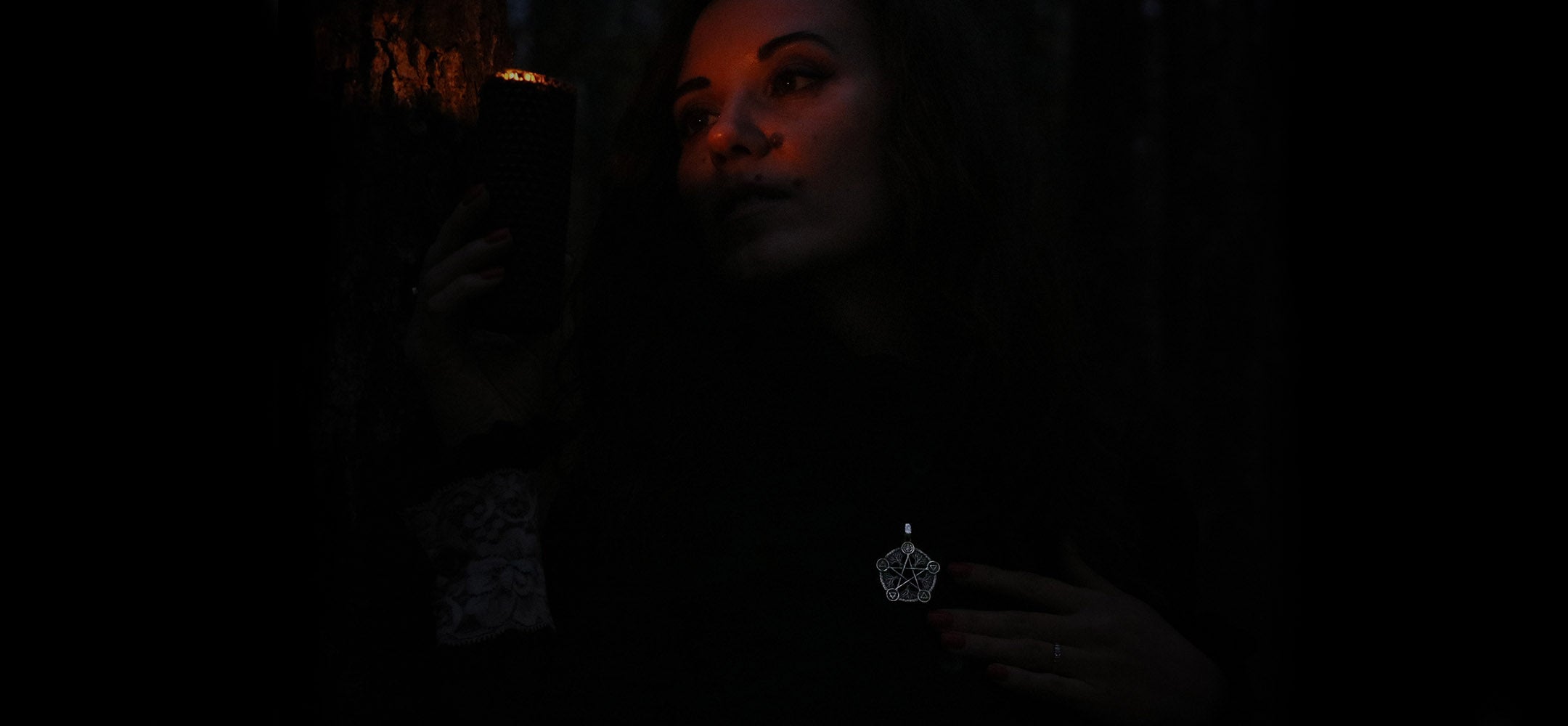- Samhain Bonfires: A Symbol of Life, Death, and Rebirth
- What Did Druid's Bonfires Represent?
- What Does a Bonfire Symbolize?
- Why Did People Have Bonfires During Samhain in Ancient Times?
- Protection and Purification Through Fire
- Symbolism of Light and Dark
- Ritual Practices Around Bonfires
- Modern Bonfire Traditions
- Divination and Fire Leaping
- Conclusion
Samhain Bonfires: A Symbol of Life, Death, and Rebirth
Bonfires are a central element of Samhain celebrations, deeply rooted in ancient Celtic traditions. They serve not only as physical sources of warmth and light but also hold powerful symbolic and spiritual significance during this sacred time. Here's a detailed exploration of the role of bonfires during Samhain, along with the deeper meanings and rituals associated with them.
What Did Druid's Bonfires Represent?
In ancient Celtic society, bonfires were lit by druids—priests, seers, and spiritual leaders—to mark Samhain as a communal festival. The fire represented the sun’s power, essential for survival through the harsh winter months ahead. By lighting these fires, the Celts believed they could call upon the sun’s strength to protect them through the dark season. Bonfires were not merely for warmth but were seen as sacred tools to connect with the divine. They were also believed to purify and cleanse both individuals and the community, preparing them for the long winter.
What Does a Bonfire Symbolize?
Bonfires have been a symbol of transformation, renewal, and the victory of light over darkness for centuries. During Samhain, they symbolize the ongoing cycle of life, death, and rebirth. The bonfire serves as a beacon of hope and life in the face of winter’s darkness, reminding the people that even as the world enters a time of decay, the sun will return after the winter solstice. Bonfires also represent purification, where individuals and their livestock would pass between the flames or smoke, seeking protection, health, and luck for the coming year.
Why Did People Have Bonfires During Samhain in Ancient Times?
The ancient Celts celebrated Samhain as a time when the veil between the living and the dead grew thin, making it easier for spirits to cross over. To protect themselves from wandering spirits and ensure a safe transition into winter, the Celts lit bonfires to ward off evil and attract the favor of benevolent spirits. These fires symbolized the sun's return, and by sacrificing animals and offering their bones in the flames, the Celts believed they could secure blessings for a fruitful winter. The practice of burning bones is thought to have given rise to the term "bone fire."
Protection and Purification Through Fire
Bonfires during Samhain were thought to have strong protective and purifying powers. The flames and smoke were believed to drive away evil spirits and harmful entities, which were thought to roam more freely as the veil between the living and the dead thinned. The warmth and light of the fire symbolized life and safety amid the encroaching darkness. People and livestock would often pass between two bonfires in a purification ritual called "fire leaping," believed to bless and protect them from harm throughout the winter. This practice, part of a larger fire festival, ensured health, prosperity, and spiritual purity for both people and animals.
Symbolism of Light and Dark
Samhain occurs at a time when the days grow shorter and darkness overtakes the light. The bonfire becomes a powerful symbol of defiance against the encroaching dark, representing hope, renewal, and the promise that, despite the coming darkness, the light will return. The fire serves as a reminder that life continues even as nature decays, and that the sun will be reborn after the winter solstice. The communal aspect of the bonfire also reflects the importance of unity during difficult times, fostering a sense of togetherness and reinforcing bonds between family, friends, and the community.
Ritual Practices Around Bonfires
Burning the Wicker Man
In some traditions, a large effigy known as the "Wicker Man" was constructed from woven wood or straw. This figure symbolized the old year or even the spirit of the harvest, and it was ritually burned in the bonfire. This act of destruction symbolized the end of one cycle and the beginning of another, clearing the way for renewal.
Casting into the Fire
People would often throw offerings into the flames. This could include personal tokens, pieces of harvest, or written wishes for the new year. By offering these items to the fire, participants sought blessings, protection, or the resolution of personal challenges. Some would write down things they wished to let go of—such as bad habits, past hurts, or negative experiences—and burn them, symbolically releasing them.
Lighting Torches and Hearth Fires
In some traditions, all household fires were extinguished before the bonfire was lit. The communal bonfire would then serve as the source for relighting hearth fires. Families would take torches or embers from the Samhain bonfire back to their homes, symbolizing the continuation of the protective energy and the connection between the community and their household. This act of relighting represented the cycle of death and rebirth, ensuring that the spirit of Samhain extended into daily life.
Divination with Fire
Fire has long been associated with spiritual insight and divination. During Samhain, many practiced fire scrying, gazing into the flames or the coals to seek visions, omens, or messages from the spirit world. Because Samhain is a time when the veil between worlds is thin, it was believed that the spirits could communicate more easily, and the fire could act as a medium for these messages.
Fire Leaping for Luck
People would sometimes leap over or pass through the smoke of the bonfire, believing it would bring good luck, fertility, and health in the year ahead. This practice was thought to cleanse negative energies and ensure prosperity. Couples, in particular, would jump over the flames together, symbolizing their union and fertility for the coming year.
Modern Bonfire Traditions
In modern pagan and Wiccan practices, the Samhain bonfire continues to be an important ritual, though it's often adapted to contemporary settings. While the scale of the fires may be smaller, the symbolism remains intact. In urban or suburban environments, bonfires may take the form of candle lighting or smaller, controlled fires. People still gather around the fire for communal rituals, meditations, and to honor their ancestors.
Some modern practices may include:
- Writing Intentions: Participants write their hopes, fears, or things they wish to release on paper and toss them into the fire.
- Ancestor Offerings: Items like bread, wine, or personal mementos are placed into the fire to honor loved ones who have passed.
- Candle Circles: In settings where a full bonfire isn’t feasible, candles are often lit in a circle to represent the fire and to call upon its protective and transformative power.
Divination and Fire Leaping
Fire has long been associated with spiritual insight. During Samhain, fire scrying or gazing into flames and coals is a common practice to seek visions, omens, or guidance from the spirit realm. Fire leaping, where individuals jump over or through the fire, remains a symbolic act of purification and a wish for good fortune in the year ahead.
Conclusion
Samhain bonfires are much more than just a source of light and warmth; they are rich in symbolism, tradition, and spiritual significance. From their origins in ancient Celtic rituals, where they were believed to invoke the protection of the sun and the spirits, to their modern-day adaptations in pagan and Wiccan communities, these fires continue to serve as powerful symbols of life, death, and rebirth. Whether through purification rituals, offerings, or the communal gathering around the flames, the bonfire remains a central focus in marking the transition into winter and honoring the ancestral connections that bind the past with the present.
The bonfire stands as a beacon of hope, a defiance against the darkness of winter, and a reminder of the eternal cycle of nature. Through its flames, we continue to connect with our ancestors, honor the natural world, and seek spiritual insight, protection, and renewal. The rituals and practices that surround the bonfire—whether in ancient times or today—show us the enduring power of fire as a symbol of transformation and unity. As we continue to celebrate Samhain, the bonfire invites us to reflect on the cycles of life and death and to embrace the light in times of darkness.





